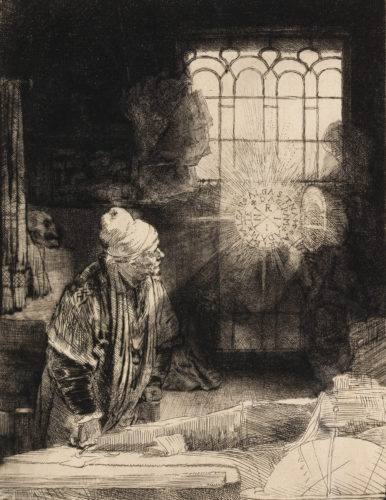This virtuoso example of Rembrandt’s skill as a printmaker depicts a mysterious subject, who has subsequently been named as ‘Faust’. A scholar in his study suddenly sees a glowing sphere, which is covered with inscriptions that include the letters ‘INRI’: the inscription placed over Christ’s head during the crucifixion. Perhaps this is a moment of revelation, of divinely inspired insight; or perhaps the fact that most of the inscription is indecipherable makes it an allegory of faith, reminding the erudite scholar that human knowledge is partial and ambiguous, in contrast with the clarity of divine wisdom. Or perhaps this figure does most resemble Marlowe’s Dr Faustus (Doctor Faustus, c. 1592), who rejected the conventional study of religion and, through the use of magic, sold his soul for the promise of knowledge and power:
Divinity, adieu!
These metaphysics of magicians
And necromantic books are heavenly.
Lines, circles, scenes, letters, and characters -
Ay, these are those that Faustus most desires.
O, what a world of profit and delight,
Of power, of honour of omnipotence,
Is promised to the studious artisan!
Christopher Marlowe, Dr Faustus (B-Text, 1.1.47-54)











